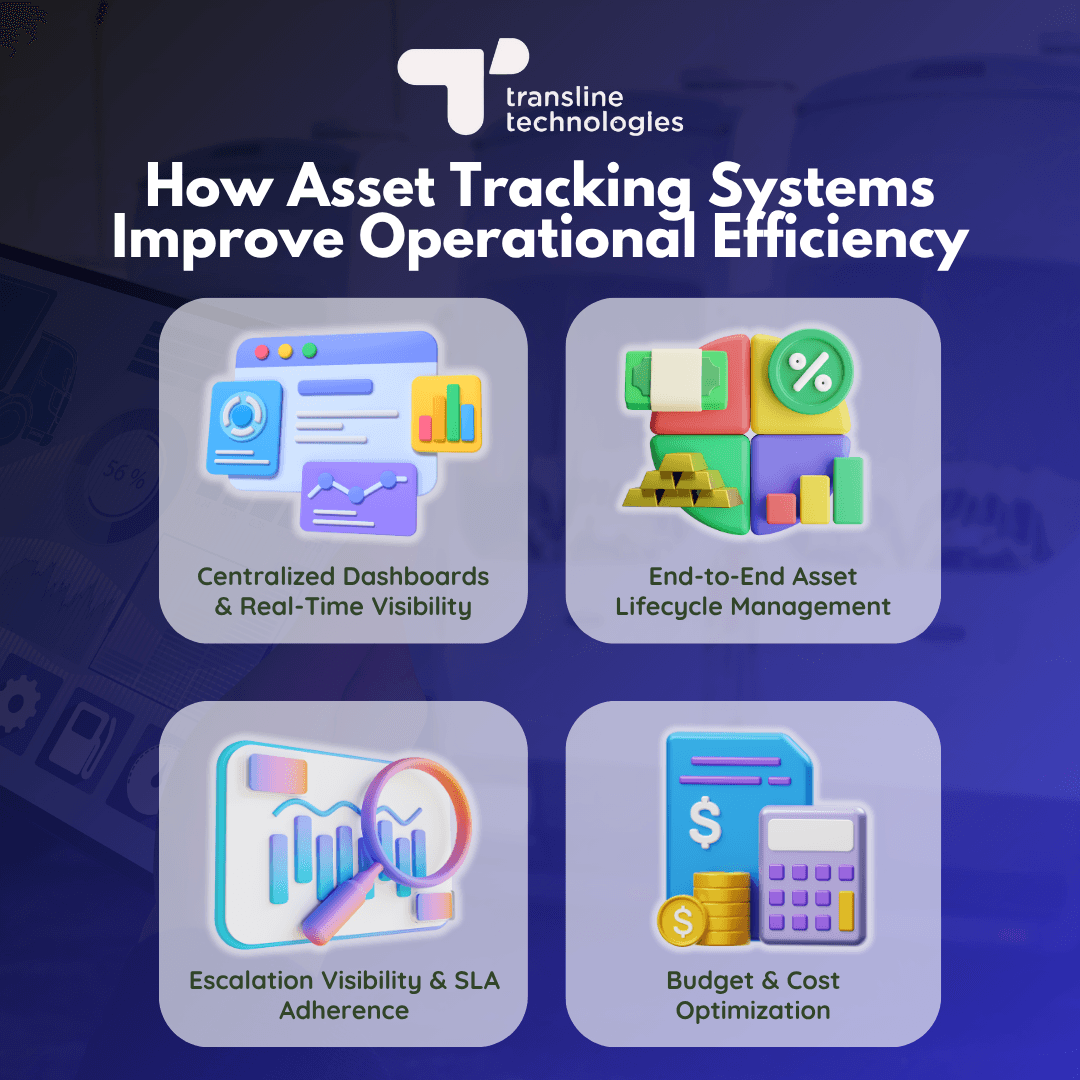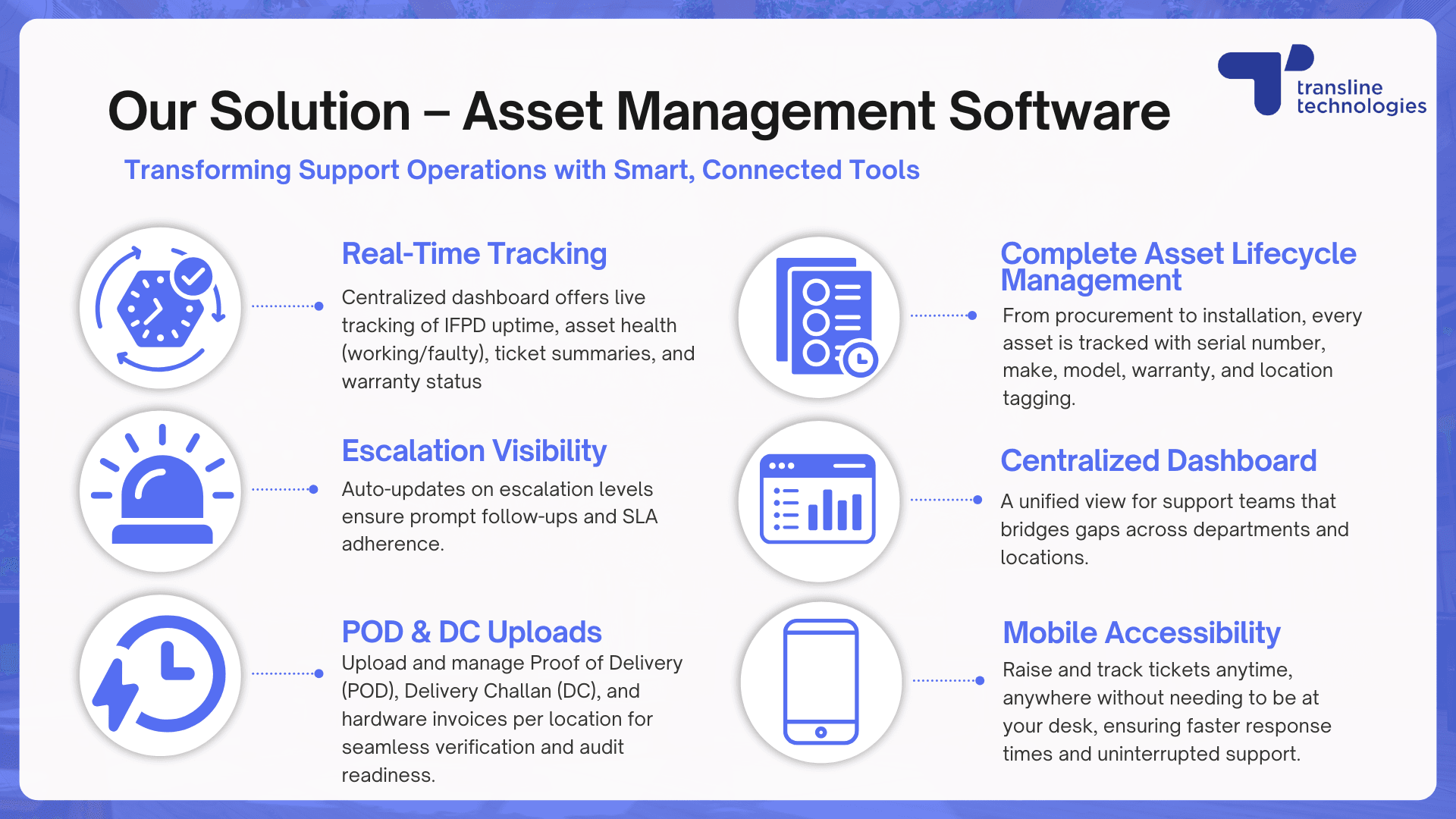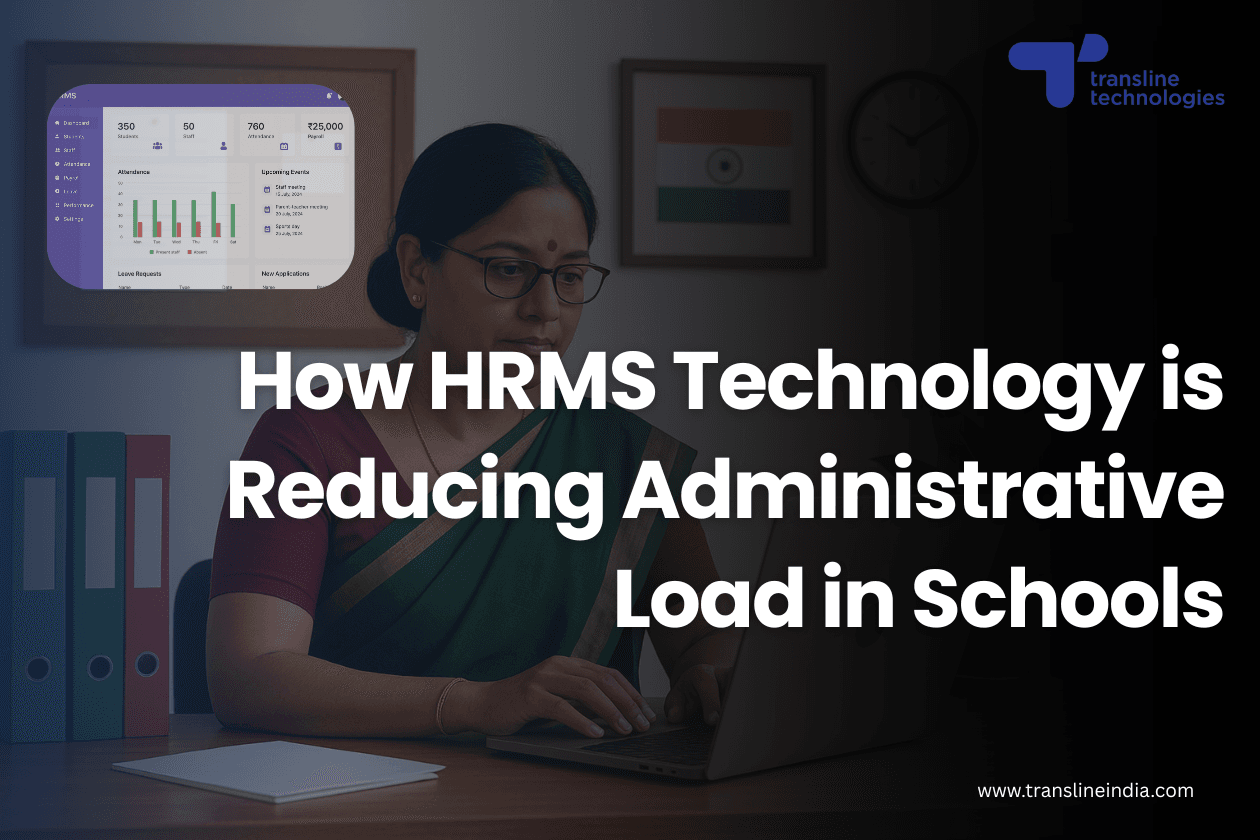
Government enterprises spend a significant amount of money on projects and various assets. However, this allocation of funds often goes unnoticed and untracked. The growing need for a systematic, organized, and transparent approach to asset tracking system and budget management has led to the rise of government asset management systems. In today’s fast-paced business landscape, organizations are under constant pressure to scale without proportionally increasing costs. The key lies in automation, optimizing existing resources to drive greater efficiency and revenue. This highlights the need for a robust asset management software that streamlines budget utilization, resource allocation, asset tracking system, and monitoring, empowering businesses to not only thrive but also stay ahead.
Why Government Enterprises Need Asset Management Software
Government departments in India are responsible for managing a wide range of infrastructure, including public buildings, roads, and educational institutions. From small-scale projects like maintaining classroom infrastructure in schools and colleges to large-scale operations such as railway offices and government utilities, the scope of government asset management is vast and ever-expanding. Traditionally, asset tracking systems involved manual processes, often resulting in data loss, inefficiencies, and unnecessary costs. These outdated systems lacked not only transparency but also the ability to monitor budget allocation and asset performance in real time.
Government enterprises in India spend over ₹11 lakh crores annually on various assets. However, ensuring whether these assets are functioning properly and efficiently often goes unnoticed and is not given due priority. This is where asset management software becomes crucial. A centralized and optimized asset tracking software helps government enterprises overcome challenges such as budget overruns, untracked assets, delayed maintenance, and lack of accountability and transparency.
The Cost of Poor Asset Visibility in Public Sector
Asset tracking has become a vital tool for organizing resources and managing budgets effectively. In the public sector, the absence of a reliable inventory tracking system not only causes operational delays but also results in significant resource wastage. This is especially critical in IT departments, where high-value assets like Interactive Flat Panel Displays (IFPDs), laptops, computers, projectors, and other equipment often go missing, remain underutilized, or get damaged due to lack of oversight. Such inefficiencies can lead to unnecessary procurement, increased costs, and poor service delivery. Without a structured system in place, managing inventory becomes chaotic and heavily dependent on manual processes, wasting time, money, and human effort.
This is where inventory management software plays a crucial role. It helps track and monitor assets in real time, ensuring that nothing goes unaccounted for, whether it is forgotten in a storage room or unintentionally duplicated. These systems also reduce manual intervention, improving accuracy and saving administrative hours. In fact, modern government asset management solutions often include built-in inventory tracking systems that are customizable to departmental needs. Beyond efficiency, tracking inventory is essential for safeguarding sensitive data. Misplaced IT assets can pose serious privacy and data security risks, making inventory visibility not just a financial need but a security imperative.
The Shift in Inventory Management
Traditionally, inventory management or inventory tracking was not given much importance. Over time, organizations began using paper-based systems like registers or handwritten logs to maintain records. Later, with the introduction of spreadsheets, these methods became more common but also increasingly inefficient and error-prone, especially in government sectors.
In the early 1900s, punch cards were used to track stock levels. With the arrival of computers, record-keeping methods underwent a major transformation. This marked the beginning of more advanced systems like inventory management software and digital asset management systems. These modern solutions gave authorities better control over data, resources, and budgets. They significantly reduce the chances of human error and prevent misplacement of assets. By automating operations and minimizing the need for manual input, inventory management software saves both time and cost while ensuring accurate, real-time tracking.
How Asset Tracking Systems Improve Operational Efficiency
Asset tracking systems help improve operations by providing in-depth analysis of inventory and all assets, whether they are being regulated or not. They also offer a comprehensive summary of budget and cost tracking, allowing one to effectively and economically manage assets and everything related. Below are some ways in which asset tracking software improves operational efficiency:
Real Time Data Through Centralized Dashboards
The best asset management software comes with a centralized dashboard that offers live tracking of IFPD uptime, asset health (whether your systems are working or faulty), ticket summaries, and warranty status. Based on this information, you are instantly informed of issues such as faulty systems, inactivity, or other problems. You can take action directly through the software by raising a support ticket. Moreover, a unified view allows support teams to monitor assets efficiently and respond quickly. It also bridges communication gaps across departments and locations by keeping everyone updated in real time.
Complete Asset Lifecycle Management
From procurement to installation, every asset is tracked with details such as serial number, make, model, warranty, and location tagging. You can get these essential details through your digital asset management system, and the best part is that you do not need to add this data manually. Also, the best asset management software allows you to upload and manage Proof of Delivery (POD), Delivery Challan (DC), and hardware invoices per location for easy verification and audit readiness.
Escalation Visibility
This feature provides auto updates on escalation levels to ensure prompt follow-ups and adherence to SLA timelines. When a reported issue is not resolved within a specified timeframe, the system automatically escalates it to the next level. This ensures that nothing slips through the cracks, helping support teams prioritize tasks, accelerate resolution, and maintain accountability.

The Role of Warehouse Inventory Management Software in Government
Warehouses are a vital and expanding part of government operations, especially as public sector departments continue to grow in terms of infrastructure, IT capacity, and logistics. Large volumes of physical inventory are stored in bulk across multiple warehouses. Managing such large-scale storage manually or through outdated systems often results in confusion, delays, misplaced stock, and unnecessary budget strain. This is where warehouse inventory management software becomes essential.
A centralized system removes the need to physically oversee inventory at every location. With the right software, government teams can access real-time information on stock levels, movement, and usage across all warehouses from a single platform. This not only simplifies tracking but also helps avoid overstocking, underutilization, or loss of critical assets. Additionally, warehouse inventory management software makes it easier to handle stock reconciliation, dispatch planning, and audit preparation. It supports efficient procurement and warehouse workflows, boosting transparency and reducing both time and operational costs.
Features to Look for in the Best Inventory Management Software
Choosing the right inventory management software and asset management tools goes beyond just tracking stock. It’s about finding a tool that simplifies daily operations, gives you control over every asset, and keeps accountability intact across departments. Here are a few key features to look out for:
Mobile Interface
This is essential because it allows users to access the software from anywhere, right from their phone. With just one tap, they can check stock levels, raise tickets, or update records. It’s especially helpful for field workers who may not have access to a computer while on the move. A mobile version simply makes things faster, easier, and much more efficient.
Lifecycle Tracking
From procurement to installation, every stage of an asset's journey needs to be recorded. A good system should keep track of total quantity, procurement status, and shipment details right down to the invoice number, quantity, and product specifications. This helps in budget forecasting and ensures that all necessary updates or maintenance activities are done on time.
SLA and AMC Monitoring
Warranties, AMCs, and handover compliances are easy to forget when managed manually. The right software automatically sends reminders before expiry and ensures there’s no disruption during vendor transitions. Teams get free access during the full warranty and AMC period, so they don’t have to worry about service gaps.
Auto-Escalation and Compliance Logs
Automation plays a big role in timely resolutions. A smart tool should escalate unresolved issues to the next level automatically, ensuring nothing is missed. It should also keep proper records of all actions taken, which is especially useful during audits or compliance checks.
Transline’s platform brings all of these capabilities together, offering powerful asset management tools that help teams stay proactive, efficient, and fully in control of their inventory and assets.

Smarter Governance with Asset Management Software
Government Asset management software doesn’t just replace the old manual processes that were time consuming and exhausting. It also brings in transparency and accountability across departments. At Transline Technologies, we offer an advanced asset management software built to support the evolving needs of public sector operations. Whether it’s IT equipment, infrastructure tools, or maintenance stock, our platform gives you complete control, real time visibility, and smooth coordination across all teams.
Connect with our Solutions Team to explore how our inventory tracking system and asset management software can support smarter decisions and streamlined governance. Let’s build better systems together.



